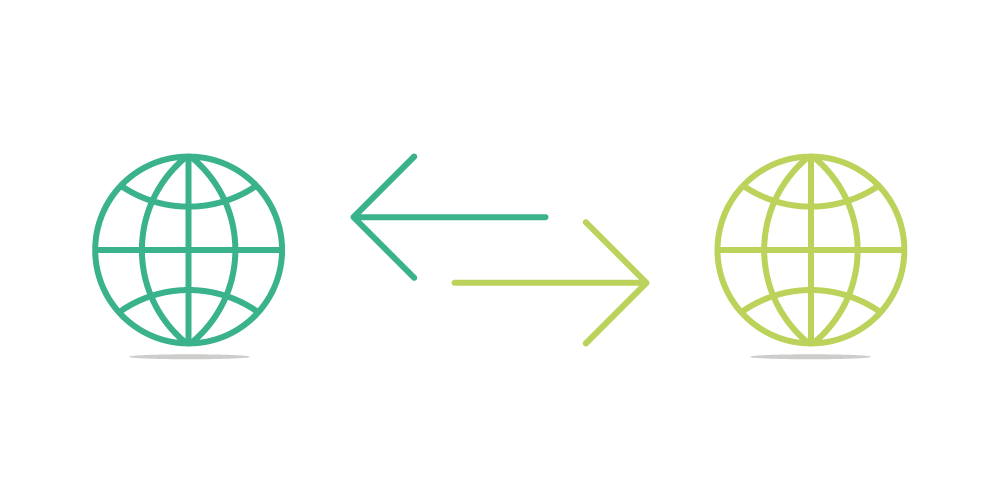Our team at SaneChoice and industry experts craft our articles to help you gain a deeper understanding of technology.
The Top Reasons Why Domain Transfers Fail

When managing a website, domain name transfers are a common occurrence. The process can be complex and prone to errors, whether transferring your domain to a new registrar or moving it to a different hosting provider. In this article, we will explore the top reasons domain transfers fail and provide tips to ensure a smooth transfer.
Common Reasons Why Domain Transfers Fail
Lack of Domain Transfer Preparation and Planning
One of the most common reasons domain transfers fail is a need for more preparation and planning. Transferring a domain requires careful consideration and attention to detail. It is crucial to understand the steps involved in the transfer process and ensure that all requirements are met. Many people underestimate the time and effort required for a successful transfer, leading to mistakes and delays.
Planning ahead and allocating sufficient time for the transfer process is essential to avoid this pitfall. Start by researching the new registrar or hosting provider and familiarise yourself with their transfer policies and procedures. Make a checklist of all the tasks to complete before, during, and after the transfer. A good task list will help you stay organised and ensure nothing is overlooked.
Incorrect Authorisation Codes or Security Settings
Another common reason for failed domain transfers is incorrect authorisation codes or security settings. An authorisation code, also known as an EPP code or transfer key, is a unique password required to initiate a domain transfer. It serves as a security measure to prevent unauthorised transfers.
During the transfer process, providing the correct authorisation code to the new registrar or hosting provider is essential. Failure to do so will result in a failed transfer. To avoid this issue, double-check the authorisation code provided by your current registrar and ensure it is entered correctly during the transfer process. Contact your current registrar for assistance if you need clarification on the code.
In addition to the authorisation code, reviewing and adjusting your domain’s security settings is essential. Some registrars have additional security features, such as domain locking or two-factor authentication. If these settings are enabled, they can prevent the transfer from proceeding. Turn off any security features that may interfere with the transfer process.
Outdated or Incorrect Contact Information
Outdated or incorrect contact information is another common stumbling block in domain transfers. When initiating a transfer, the new registrar or hosting provider will send important notifications and verification requests to the administrative contact email address listed in the domain’s WHOIS record. You will not receive these notifications if this email address is outdated or incorrect, and the transfer may fail.
To avoid this issue, it is crucial to keep your contact information current. Regularly review and update your WHOIS record with the correct email address and contact details. If you need clarification on the accuracy of your contact information, you can use a WHOIS lookup tool to verify the information associated with your domain.
Domain Name Expiration or Renewal Issues
One of the most critical aspects of a successful domain transfer is ensuring that your domain is not expired or due for renewal. If your domain has expired or is close to its expiration date, some registrars may prevent the transfer until the domain is renewed.
To avoid this issue:
- Keep track of your domain’s expiration date and renew it on time.
- Set reminders or enable auto-renewal to ensure your domain remains active throughout the transfer process.
- If your domain has expired, contact your current registrar immediately to initiate the renewal process before attempting the transfer.
Problems with the Current Domain Registrar
Sometimes, the failure of a domain transfer can be attributed to problems with the current domain registrar. This could include technical issues, poor customer service, or restrictive transfer policies. If you’re experiencing difficulties with your current registrar, it may be wise to consider transferring your domain to a more reliable and user-friendly provider.
Before initiating a transfer, thoroughly research the new registrar to ensure that they have a good reputation and offer the services and features you require. Read customer reviews and testimonials to gauge the level of customer satisfaction. Additionally, check if the new registrar has any transfer restrictions or fees that may affect the transfer process.
Tips to Ensure a Smooth Domain Transfer
If you’re unsure about the domain transfer process or want to ensure a smooth and hassle-free experience, it may be beneficial to seek professional help. Some companies and individuals specialise in domain transfers and can assist you throughout the process.
A professional domain transfer service provider can handle all transfer aspects, including contacting the current registrar, obtaining the necessary authorisation codes, and ensuring all requirements are met. They can also provide guidance and advice to help you avoid common pitfalls and complications.
When choosing a professional domain transfer service, research its reputation, experience, and pricing. Look for reviews and testimonials from previous clients to gauge their reliability and customer satisfaction. Additionally, consider contacting other website owners or online business owners for recommendations.
Conclusion
Domain transfers can be daunting, but with proper preparation and attention to detail, you can avoid common pitfalls and ensure a successful transfer. By understanding why transfers fail and implementing the tips provided in this article, you can confidently navigate the transfer process and minimise the risk of disruptions to your online presence.
Remember to plan, double-check all details, and keep your contact information current. Consider seeking professional assistance to ensure a smooth and seamless transition if you encounter difficulties or uncertainties. With careful planning and execution, you can avoid domain transfer disasters and enjoy a hassle-free transfer experience.





